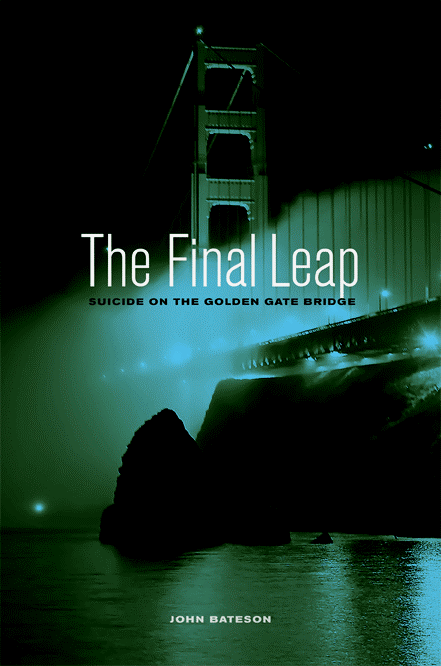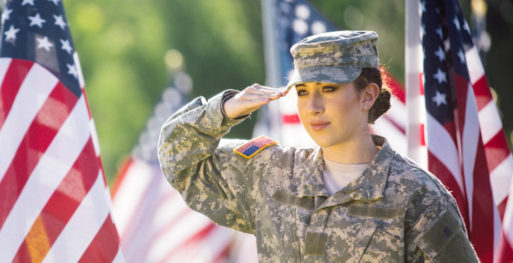Today SevenPonds has the pleasure of speaking with John Bateson, the former executive director of a nationally-certified crisis intervention and suicide prevention center in the San Francisco Bay Area. John is a recognized expert in suicide prevention, and has written several critically acclaimed books on the subject, including “The Last and Greatest Battle: Finding the Will, Commitment and Strategy to End Military Suicides” and “The Final Leap: Suicide on the Golden Gate Bridge.” More recently, he penned the book, “The Education of a Coroner,” which explores the career of former Marin County Coroner Kenneth Holmes.
Note: This interview has been edited for length and clarity.

Credit: Simon & Schuster, Canada
Kathleen Clohessy: Thanks for speaking with me today, John. Can I begin by asking you about your background and how you became involved in suicide prevention?
John Bateson: Until 1996, when I was hired to be executive director of a nationally-certified crisis intervention and suicide prevention center, I had no formal training and little understanding of suicide. My background was in social services, and I applied for the job because I was interested in learning about mental health issues. I also thought directing an agency that provided life-affirming services 24-7 would be enlightening, challenging, and ultimately satisfying, which it was.
In time, I completed the crisis center’s six-week training program and began answering crisis calls. I also was elected to the steering committee of the National Suicide Prevention Lifeline, which operates the two main suicide hotlines in the U.S. (800-273-TALK and 800-SUICIDE). In addition, I was appointed to a blue-ribbon committee that created the California Strategic Plan on Suicide Prevention and drafted the initial language that led to the creation of the California Office of Suicide Prevention. I was also a presenter at annual conferences of the American Association of Suicidology and the National Association of Crisis Center Directors.
During my 16 years at the crisis center, I learned a lot about suicide: why people choose to die; the devastating impact it has on family members and friends; and how suicide can be prevented.
Kathleen: That’s an impressive career! And you’re an accomplished author as well. In one of your books, “The Final Leap,” you discuss suicides on the Golden Gate Bridge. Can you talk about that a little bit? For instance, why is it the most popular suicide site in the world?
John: There are several reasons. First, suicide sites in general develop an aura about them. They become magnets for troubled and depressed people. If they are international landmarks as well, then the attraction is even greater.
Second, people believe that death will be instantaneous and virtually guaranteed. But this isn’t necessarily true. Five percent of Golden Gate Bridge jumpers survive the fall, plunge deep into the water, and end up drowning, their last minutes filled with agony and terror.
Third, there is no gruesome death scene for family members to discover. People either disappear forever or their bodies are recovered by strangers—boaters or the Coast Guard.
Last, and most important, access is easy. There are parking lots at both ends of the bridge, and pedestrian walkways on both sides that are open year-round. More than that, though, the railing is only four-feet-high—low enough for virtually anyone to climb over.
Kathleen: Were you instrumental in the decision to erect a suicide barrier on the bridge?
 John:The advocacy of family members who have lost loved ones to the bridge has had the greatest impact, but my book played a part by telling their stories and summarizing studies that show the effectiveness of bridge barriers. One father of a 25-year-old son who jumped five years earlier told me that even after his son’s death, he wasn’t in favor of a barrier because he didn’t think it wouldn’t make a difference. He thought people who wanted to kill themselves would resort to another lethal means. After reading my book and learning that that isn’t true, he became a strong supporter for a suicide barrier on the bridge.
John:The advocacy of family members who have lost loved ones to the bridge has had the greatest impact, but my book played a part by telling their stories and summarizing studies that show the effectiveness of bridge barriers. One father of a 25-year-old son who jumped five years earlier told me that even after his son’s death, he wasn’t in favor of a barrier because he didn’t think it wouldn’t make a difference. He thought people who wanted to kill themselves would resort to another lethal means. After reading my book and learning that that isn’t true, he became a strong supporter for a suicide barrier on the bridge.
After the book was published, I was recruited to serve on the board of the Bridge Rail Foundation, an all-volunteer, nonprofit organization dedicated to ending suicides on the Golden Gate Bridge and restricting easy access to other lethal means of suicide. The organization has been a vocal advocate for a physical barrier on the bridge, and I’ve been proud to lend my voice to the cause.
Kathleen: In 2015, you wrote “The Last and Greatest Battle” about suicide in the military, which I understand is still a huge problem today. Veterans are also killing themselves in astronomical numbers. I read a report that said there were about 20 veteran suicides per day in 2016. Can you speak to why this is the case?
John: It’s difficult for someone who has never served in the military to understand what it’s like to be deployed today. Troops face the constant threat of dying or being injured and witness violent deaths and injuries of others on a regular basis. In addition to grief, they often feel responsible for the deaths of others, or guilty that they didn’t do enough to protect a buddy who died. Finally, they feel that no place is safe. Even when they are behind concrete walls, they are subject to mortar fire at any time.
The way war is waged today has increased the psychological stress that troops are subject to. Every person in a war zone is at risk, and there is no time to relax. This need for constant vigilance and hyper-alertness leads, among other things, to sleep deprivation and a reliance on medications to function.
When these veterans come home from war, the stress doesn’t end. They tend to make constant perimeter checks to ensure the safety of family members. They limit outside activities of spouses and children. They avoid lighted areas at night because they feel exposed, and dark areas because the enemy can hide more easily. They also avoid confined spaces like stairwells because escape is harder, and places that have crowds, like big-box stores, amusement parks, and farmers markets, because of the fear of a suicide bomber. They drive aggressively, tailgating and refusing to yield the right of way because their survival in the Middle East often depended on it. To dull their senses and numb their pain, they typically self-medicate with alcohol and/or rely on prescription painkillers. Most also keep a loaded firearm around them at all times because without it they feel defenseless.
Kathleen: Do you believe the military is doing enough to address the issues combat veterans face both when they are deployed and when they come home?
John: No. Military leaders often attribute a service member’s suicide to the breakup of a relationship, a financial setback, a legal issue, a drinking problem, or drug use—all individual foibles. The answer, from the military’s point of view, is to provide more training to individuals in suicide prevention so that they become tougher, stronger, and more resilient. But I believe the real solution is institutional changes in policies, procedures, attitudes, and cultures in two of our biggest bureaucracies—the departments of Defense and Veterans Affairs.
Kathleen: What do you suggest?
John: In my book I describe five steps that military leaders can take.
First, they have to be committed to ending every suicide. Even one suicide is unacceptable if that person is your spouse, child, sibling, parent, partner, or close friend.

Credit: apa.org
Second, troops need to receive as much training in how to reintegrate into society as they receive to become killing machines for the U.S. government. Military training and combat experience teaches soldiers to suppress emotions; deal with conflict through violence; become intolerant to pain; and be fearless in the face of death. Not coincidentally, these are the same qualities that make an individual more at risk for suicide. Developing ways to reverse this training will go a long way toward ending the problem.
Third, admitting a psychological problem is difficult for anyone, but it’s nearly impossible for someone in the military. Such an admission can result in a commander’s scorn, end chances for promotion, and shorten one’s military career. To reverse this mindset, I suggest, among other things, awarding Purple Hearts to troops who suffer serious mental health injuries in combat the same way that Purple Hearts are awarded to those who suffer a serious physical injury. Injuries are injuries, and none should be minimized.
Fourth, the VA needs to expedite treatment and claims. Many veterans who served their country with pride now feel abandoned. Their biggest challenge in transitioning to civilian life is receiving health care and compensation for injuries they suffered that are related to their military service.
Fifth, all branches of the military need to enforce a zero-tolerance policy towards sexual harassment and abuse. Women now constitute 20 percent of our fighting force. They are expected to exhibit the same tough, warrior mentality as men and to defy stereotypes, including those that portray them as too fragile for military duty. They also have to deal with sexual harassment and sexual assaults far more often than female civilians. The Pentagon needs to show more regard for women soldiers and lessen the abuse that they receive. In addition, they need to dishonorably discharge men who assault female service members, ban pornography, and refuse to admit recruits who have a history of sexual assault or domestic violence.
This concludes part one of my interview with John Bateson. Please come back next week when we discuss why suicides are increasing in the U.S. and what we can all do to help.

 How Can We Address the Need for Suicide Prevention in Our Society?
How Can We Address the Need for Suicide Prevention in Our Society?


 Our Monthly Tip: Make an “In Case of Death” File to Ease Loved One’s Grief
Our Monthly Tip: Make an “In Case of Death” File to Ease Loved One’s Grief
 Passing of Beloved Comedian Births a New Comedy Festival
Passing of Beloved Comedian Births a New Comedy Festival















